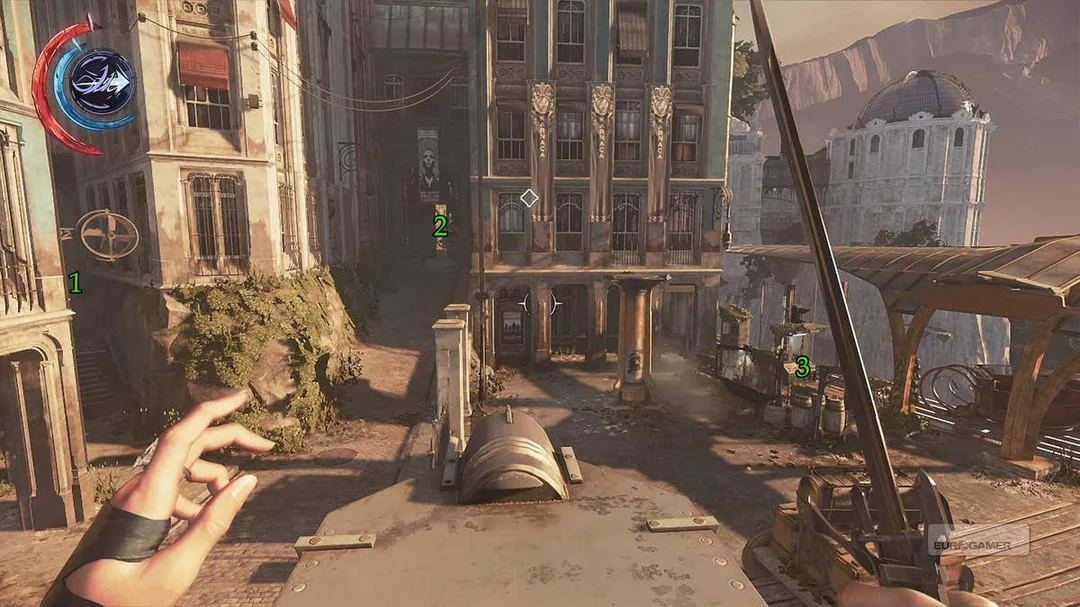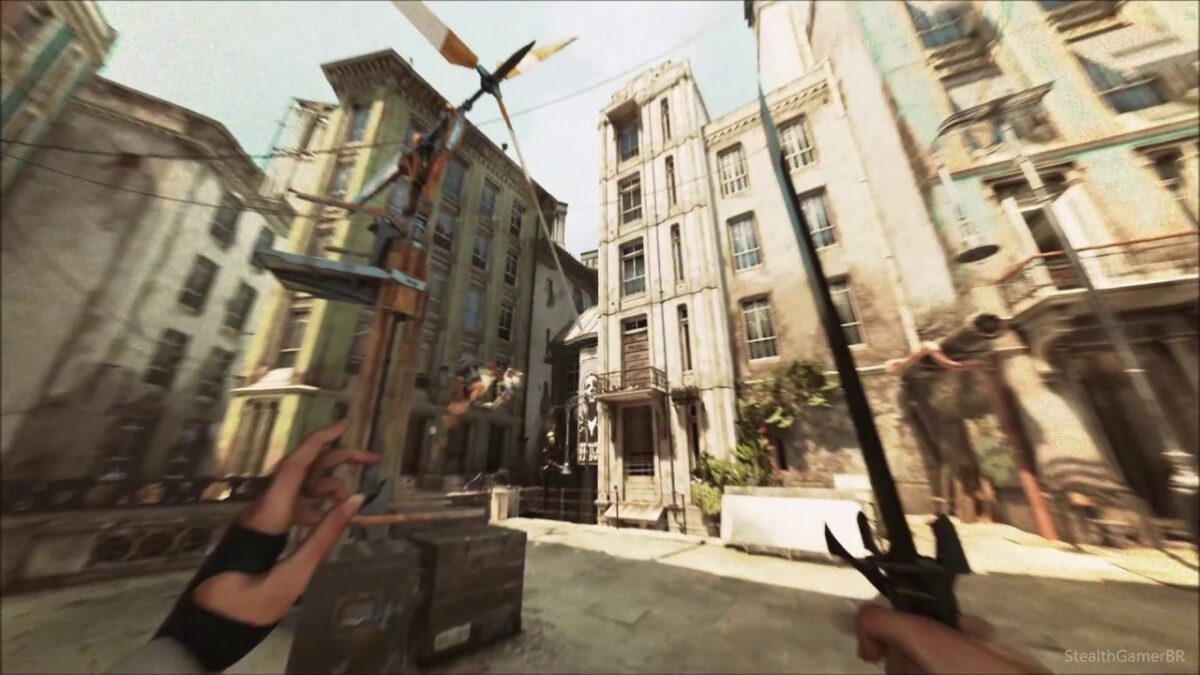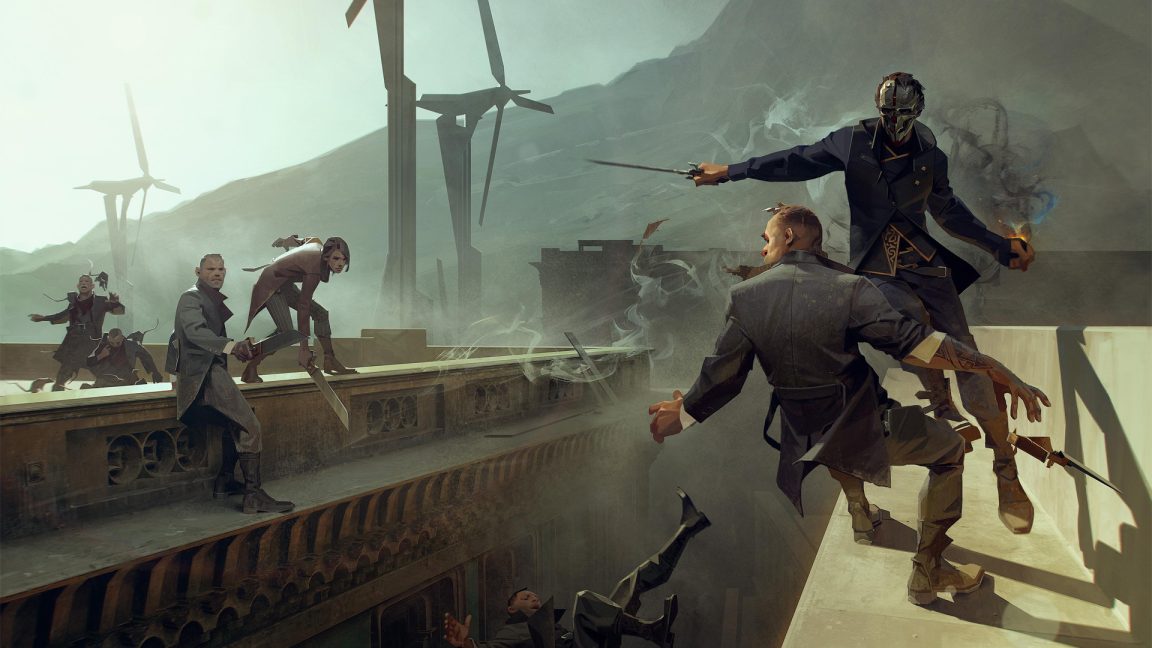The stealth genre has seen a lot of ups and downs in recent years, with more downs in 2025 if we’re honest. No great AAA stealth game worth noting has appeared until the Metal Gear Solid: Snake Eater remake came along, and that’s saying something. So we thought, why not go way back and talk about one of the defining stealth action games – Dishonored.
This 2012 title was Arkane Studios’ claim to fame and we don’t mean that figuratively. While Arx Fatalis and Dark Messiah of Might and Magic have gained critical success, it wasn’t until Dishonored released that the French studio started gaining street cred in the gaming landscape.
They followed it up four years later with Dishonored 2, and both titles opened up the box of Pandora that is immersive sims for the mainstream, having that signature Arkane atmosphere drip that the author can’t stop harping on about.
Looking back now though, Dishonored truly feels like a culmination of all of Arkane’s previous experiments and cemented it as the clearest expression of the studio’s design philosophy.
Playing as Corvo Attano felt like being Garret all over again, and we can’t help but mourn the loss of a Dishonored 3 that looks less and less likely to happen.
Instead, we’re taking a moment to remember one of the greatest stealth sims ever created and explain why it was great too.

Dunwall Invites You to Experience it
Dishonored and Dishonored 2 created some of the most memorable settings and world building we’ve ever come across in a video game. The cities felt alive, while being full of grit, grime, secrets and yes – contradictions.
The verticality was unmatched at the time and you could find something useful or even just cool around every corner, so no trip off the beaten path felt wasted in a playthrough.
The Victorian, yet oppressive architecture was a stark contrast to the plague-ridden streets of Dunwall and created a world so bizarre and alien, yet so familiar in a way we haven’t experienced so far.
Everything is handcrafted, from the whale carcass being gruesomely butchered in the harbor of Karnaca, to the fly-infested and abandoned houses you can explore, each holding a unique and chilling story as to why they’re abandoned in the first place.
Each alley, each rooftop and hidden path isn’t only built for exploration, but makes sense in the grand scheme of things. You don’t feel like you move through a video game level, but inhabit a city that’s marred by corruption, sickness and entitlement alike.
As you listen to guards gossip about the ever-changing atmosphere, depending on what choices Corvo makes in your game, you are slowly but surely piecing together the pieces that enrich this weird place, without ever feeling tacked on.
Powers, Gadgets And…No Kick.
Your choice of playstyle begins by trying to understand and exploit each encounter to your benefit, or even by avoiding combat altogether. This ties in with the level design, but it runs a bit deeper than that. The choices you make in how you progress Corvo’s abilities determine how you traverse the level and how you tackle the varied objectives.
It becomes a sandbox of creativity which rewards experimentation, with every power having their strengths and weaknesses.
As you can tell, there are many building blocks to this experience and this really is Arkane’s trademark.

What seemed like a simple stealth action game, becomes the immersive sim of the 90s, a genre nearly forgotten and replaced by endless and seamy open worlds, filled with irrelevant icons to feed upon. Your playstyle isn’t just determined by your powers, either – only your own creativity can limit how you can dispose of enemies and solve complex situations.
The only downgrade from their previous entry Dark Messiah of Might and Magic is that there is no dedicated kick button. Finishing up Dark Messiah, it is difficult to blame Arkane though; that previous title forces you to mash the kick button.
Systems That Reward Creativity
Much like one of the key reasons to play Arkane’s Arx Fatalis, Dishonored thrives on systems that overlap. Guards can be distracted with noise, enemies can be toppled with physics, and environments are built with multiple entry points. There’s rarely a single “correct” solution. Each mission becomes a puzzle box with half a dozen answers waiting to be uncovered.
The Clockwork Mansion in Dishonored 2 is the perfect example; a shifting labyrinth of gears and walls that reconfigures on the fly.
You can storm through the front, dismantle its mechanisms, sneak through secret passages, or avoid much of the chaos entirely by finding a creative shortcut. That level alone cemented Arkane as one of the last true champions of the immersive sim.
A Story That Matches the World
Corvo’s tale of betrayal and revenge was simple, but the choice to be merciful or merciless made it personal. Emily’s arc in Dishonored 2 deepened the themes of power, legacy, and responsibility. Neither game relied on endless exposition.
Instead, they trusted players to piece together lore through letters, overheard conversations, and environmental details.
The factions, too, felt layered. Overseers, whalers, aristocrats – everyone had their role in a city rotting from within. Even minor NPCs seemed to live real lives, which made your choices sting all the more. Spare someone today, and you might find them changed later. Kill too freely, and the world itself darkens.
Dishonored Is Not Without Its Flaws
The first game’s combat feels clunky if you lean too hard into swordplay, and stealth can sometimes break when AI behaves oddly.
Concerning the sequel, Dishonored 2 suffered from technical issues at launch, particularly on PC, which soured some players before patches smoothed things out. And while both games were critically adored, they never sold at blockbuster levels – a fact that haunts Arkane to this day.
Still, those flaws pale next to what the series achieved. Few games trust the player the way Dishonored does, and fewer still make those choices ripple through the narrative and the world so elegantly.
Will There Be a Dishonored 3?
What makes Dishonored so remarkable is how clearly it defines Arkane’s legacy. The DNA of these games is visible in Prey, in Deathloop, even in the ambitions of Redfall.
Dishonored showed us that Arkane could take immersive sim design and polish it into something modern, stylish, and endlessly replayable.
But after Redfall’s failure and the underwhelming sales of Prey, the odds of Dishonored 3 are slim.
Arkane’s co-founder teased a new title in 2024, which has now been revealed to be game based on Marvel’s Blade. That has only pushed back hopes of a third instalment in the Dishonored series, but a leaked Microsoft document did reveal that the game is in development.






